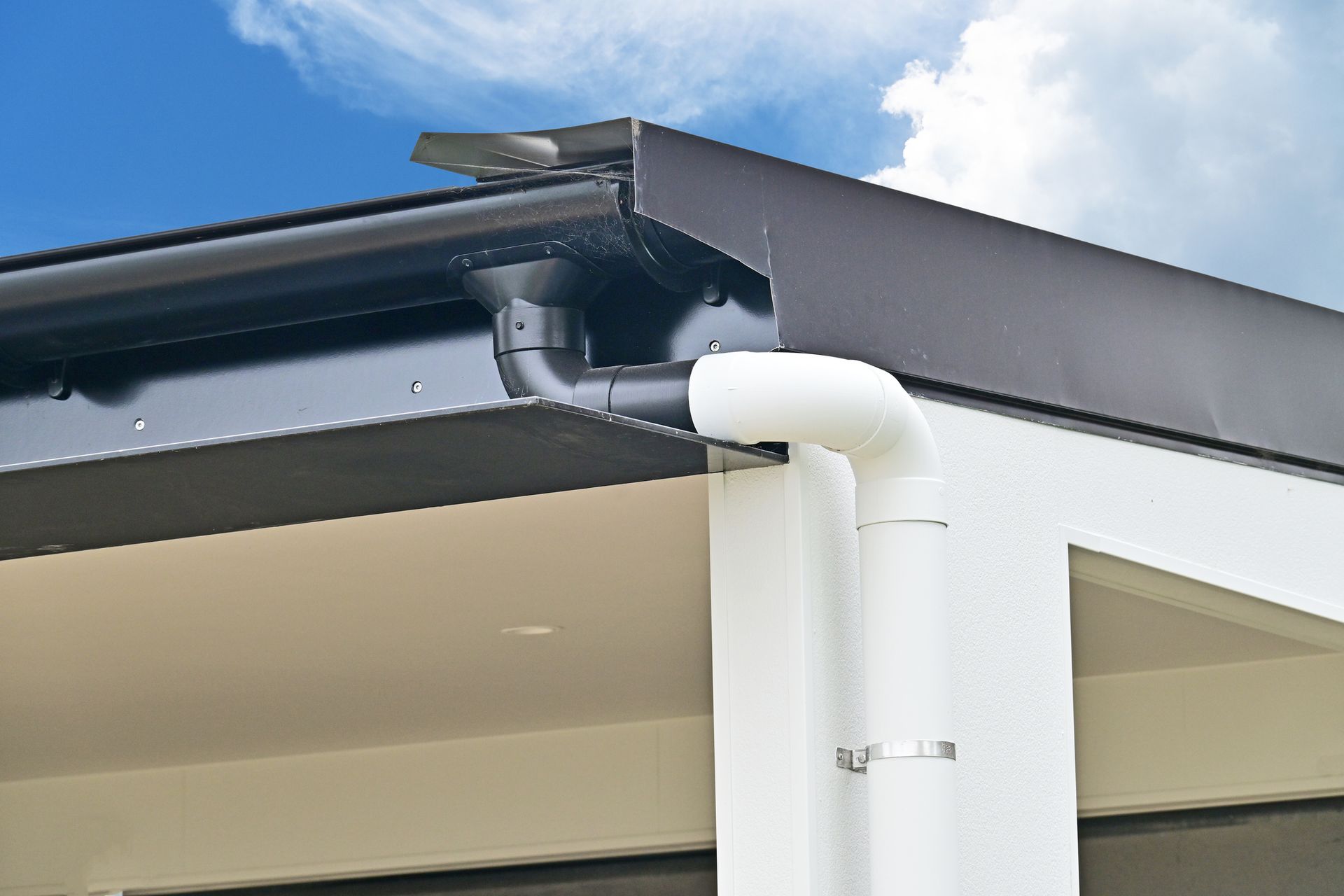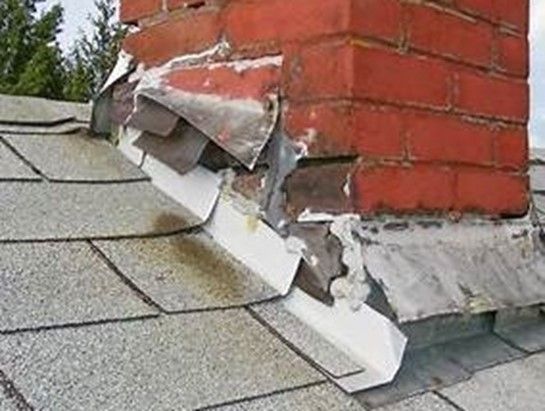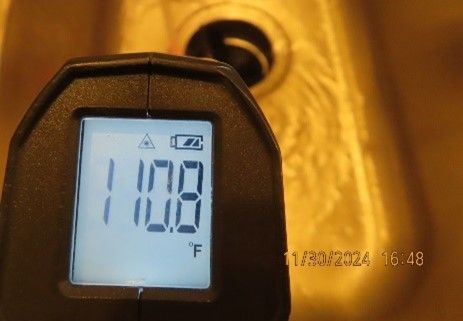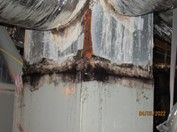Water Leak
After starting the drain, I headed back downstairs to check on things. I walked into a bedroom directly below the upstairs bathroom area, and what I found was not what anyone wants to see. Water was coming through the ceiling. It wasn't just a drip; it was actively leaking. The water was primarily coming through the light fixtures in the ceiling, in multiple areas. We also found water leaking through the HVAC register in the ceiling.
The damage wasn't confined to just the ceiling either. There was water on the floor in multiple locations. Water spots were beginning to show up on the ceiling, indicating where the moisture was spreading. We even saw water splash marks on the walls. Perhaps most concerning, there was water running down the window sill and onto the window itself. Seeing water on the interior window sill like that tells me that the water is actually inside the wall cavity. And if water is inside the wall, it means the insulation in the wall has gotten wet.
This is going to be a significant mess for the builder to clean up. Unfortunately, this isn't the first time we've seen this type of issue. It had actually happened in another house previously, which was a major reason why the builder was concerned enough to hire us for this preventative inspection. It just goes to show how important it is to test these systems thoroughly before a house is completed and occupied.
While the video focuses on finding the leak, addressing it quickly and cleaning up the damage is crucial to prevent secondary issues like mold or further structural damage. Based on general knowledge (and not information found in the provided video source), here are some key steps typically recommended if you discover a water leak and need cleanup:
- Stop the Source: The absolute first step is to turn off the water source if possible (e.g., turn off the main water valve for the house, or shut off the valve to the specific fixture if the leak is localized).
- Assess and Document: Carefully assess the extent of the damage. Take photos or videos for insurance purposes.
- Remove Water: Begin removing standing water as quickly as possible using wet vacuums, mops, and towels.
- Dry the Area: Use fans, dehumidifiers, and open windows (if weather permits) to dry the affected areas thoroughly. This is critical to prevent mold growth. Professional water damage restoration services have specialized equipment and expertise for this.
- Remove Damaged Materials: Materials like wet drywall, insulation, carpeting pads, and baseboards often need to be removed to allow for proper drying and prevent mold. The video specifically mentioned wet insulation inside the wall, highlighting this potential step.
- Sanitize and Clean: Clean and sanitize hard surfaces that came into contact with water, especially if the water source was potentially contaminated.
- Monitor for Mold: Keep an eye out for signs of mold growth in the days and weeks following the leak.
- Make Repairs: Once everything is dry and clean, repair or replace the damaged structural components, finishes, and fixtures.
The situation I encountered highlights why a quick response to a water leak is incredibly important. While the source only mentions the immediate "mess" and wet insulation, drawing on general knowledge (not from the provided video source), here are three key reasons why swift action is critical:
- Limit Damage: Water spreads quickly and can cause extensive damage to building materials like drywall, wood, flooring, and insulation. The longer water sits, the more it saturates materials, increasing the scope and cost of repairs.
- Prevent Mold Growth: Mold can start growing within 24-48 hours in damp conditions. Mold can cause health problems and further damage to the structure, requiring professional remediation.
- Protect Structural Integrity: Prolonged exposure to water can weaken wooden structural elements, leading to potential safety hazards and significant repair work down the line.
Discovering a leak like this, especially in a new home, is definitely a challenging situation. But identifying it now gives the builder the chance to correct the underlying drainage issue and properly address the water damage before anyone moves in.
If you're dealing with a potential issue like this or need any property inspection services,
give us a call at Boxer Inspections, 281-783-3030. Hope everyone has a great day!.








